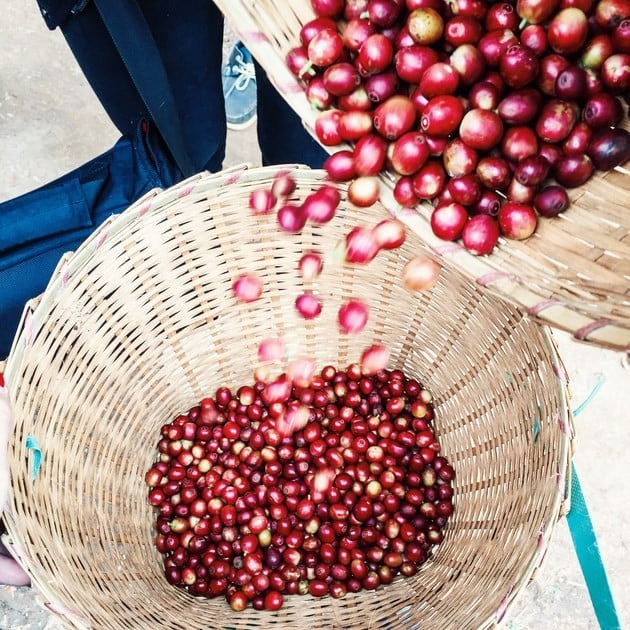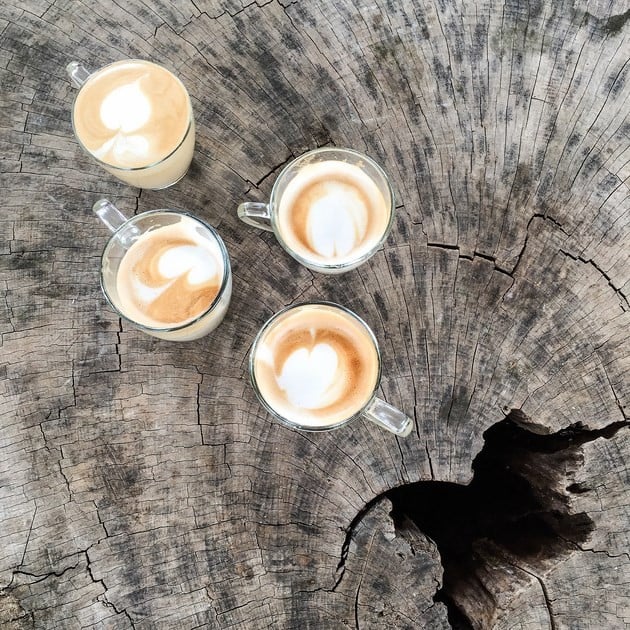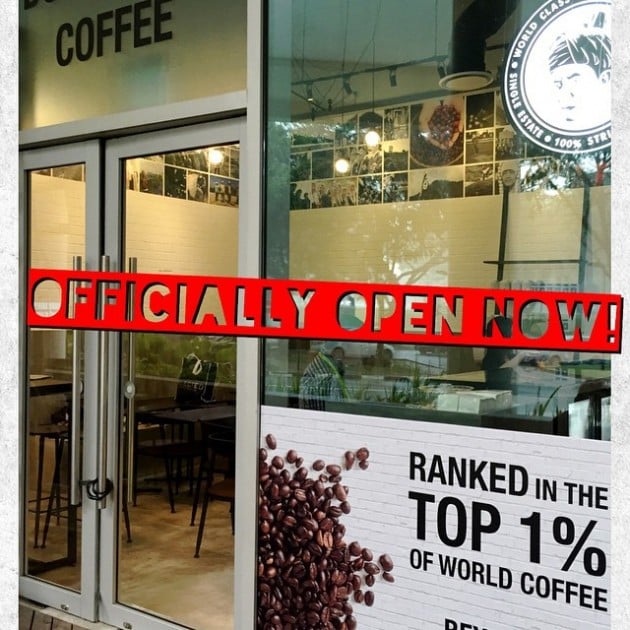About Doi Chaang Coffee
Doi Chaang Coffee originates from Doi Chang, Chiang Rai, a province in northern Thailand. The hill tribe residing there has been harvesting coffee beans for 20 years, exchanging their produce at minimal prices. In conjunction with the hill tribe chief and Canadian businessman, John M. Darch, they transformed the organic coffee production into a profitable business, giving the villagers 50% of the profit and hence earning the tagline ‘Beyond Fair Trade.’
What Does It Mean To Be ‘Ranked Top 1% Of World Coffee’?
According to coffeereview.com, certified tasters have placed Doi Chaang’s coffee brew in the top percentage, out of 20% of specialty coffee in the world. When asked what separates them from the other contenders, Ms. Patchanee, Agricultural Scientist at Chiang Mai University, explained that it’s the brand’s consistency of flavour and aroma in its brews.
We spent 3 days in the beautiful city of Chiang Rai, Thailand to find out what really made Doi Chaang Coffee that good. In this photojournal, we’ll be documenting our travel experience and showing you what goes on behind the scenes during their coffee production.
Day 1
Temperature: 17°C
After scenic mountain views on the drive up the road, we stopped at Doi Chaang’s cafe in Mae Suai. Raw coffee beans are selectively hand-picked here and lay within a 15, 000 square feet area after being extracted. They are dried for at least a week at an optimum moisture of 7-9%.
Doi Chaang Coffee produces 200 tons of coffee beans a day. That’s over 180,000 kilograms, which is about the weight of a BLUE WHALE – the largest mammal known to man. I may be an avid coffee drinker but all that coffee will last me 46 lifetimes.
Day 2

Source: Instagram
Activity: Coffee Cherry Harvesting
Temperature: 14°C
We suited up in our layered cold wear and trekked up the terraced hill for some early morning foraging. We were each equipped with simple but sturdy rattan baskets, and roamed the plantation for the reddest berries, which indicated that they were ripe and ready for picking.
Picking berries wasn’t all rainbows and sunshine. Black ants attacked my fingertips during my attempts at foraging and I was mortified into thinking it’ll be an ants’ nest I might accidentally forage for instead. Despite it being a workout, we had a beautiful, clear view of the town below.
The beans are then left to ferment for a couple of days before being dried.
Activity: Coffee Bean Sorting
Temperature: 19°C
Here, we were taught to distinguish high quality beans from the defected ones. I stared at the heap and figured we’ll be settling into a long afternoon.
Of course, we’re not professional sorters so they didn’t trust us completely during the quality control process but these sorters had to keep an eye out for 12 types of defects. From insect-damaged beans to irregular shaped ones, these beans affect the quality of roast and thereafter the taste of the coffee.
Doi Chaang Coffee uses premium roast and whole beans for their coffee. These “perfect” beans are able to be roasted evenly at an optimum temperature, which result in strong aroma and taste.
The defected beans are not thrown out but are instead sold as low-grade coffee to the nearby villages. If you find bored holes in your roasted coffee beans, that means an insect once made its mark there. #justsaying #knowyourcoffee

Source: Instagram
Activity: Coffee Brewing
Temperature: 17°C
I’m not a fan of latte art. To date, I have not Instagram-ed any cup of coffee because of a foam heart or a swan residing atop my desired serving of caffeine. This afternoon however, I was about to get hands-on with my own cup of coffee by fiddling with the steam milk spout.
I sampled a cup of freshly brewed double-shot espresso and the first taste hit my tongue like a wave. It was strong and acidic but surprisingly it did not leave a bitter aftertaste.
After fiddling with tools of the trade, I created a butt. Or a turnip. It tasted good either way.
Day 3
Activity: Coffee Cupping
Temperature: I’m still not used to the cold
Coffee cupping is the art of coffee tasting. I say “art” because we were taught to snort AND sip the coffee at the same time. I don’t know how I was supposed to do that without getting coffee jammed up my nasal passages but this was my time to be a coffee snob.
We had three ambiguous cups of coffee to taste from and thereafter recorded our olfactory experience. As if it was arranged in levels of intensity, the strength of the aroma and taste dwindled with each cup. When it was time to reveal the type of beans brewed within each cup, I declared that #2 was my favourite. The results show that cup #1 used premium whole beans, cup #2 used premium beans, and cup #3 … DEFECTED BEANS.
Can you imagine that some people actually actually voted it as their favourite?! When I tasted this cup, I could only get a faint hint of the bitter aroma and tasted pretty diluted per se.
Doi Chaang Coffee Academy
Activity: Mushroom Tea Tasting
Temperature: Optimum for bacteria
If you thought we went foraging in the forest for cute toadstools and thereafter brewed them, you thought wrong. ‘Mushroom’ nonetheless refers to ‘fungi’, which is bacteria grown indoors at the Doi Chaang Coffee Academy.
They start from mycelia and they feed on rice to ensure that the tea is safe for consumption for vegans or those on a vegetarian diet. The containers resemble jars of mac & cheese but of course, I’d refrain anyone from digging into that.
Cordyceps tea is rumoured to have essential health benefits like providing optimum body balance and may actually help control diabetes. Then again, one can say whatever they will because in spite of smelling like warm butter, there is no taste.
After 3 days in coffee school, Doi Chaang Coffee taught me beyond what their brand name carries but about coffee in general. It was an enriching experience to watch coffee being made from scratch to becoming the caffeinated beverage that hipsters crave today. Plus, a frappe only cost me S$2.50.
I have never drank so much coffee in my life.
Chiang Rai, Thailand
I never thought Thailand could be this chilly and gorgeous. With scenic landscapes as backdrops at every turn, the crisp mountain air did a lot of good for both my lungs and soul.
Doi Chang is a cosy farm province that is littered with terraced green hills and the bluest sky. It is perfect for fast drives up the winding roads on the back of a pickup with the wind in your hair. With so many scenic points, one gets to soak in the view of the quiet town surrounded by hilly greens. Those who enjoy travelling on the path less taken can get away from Bangkok and Phuket experience Thailand in all of its raw beauty.
Doi Chaang Coffee Opens In Singapore!
Image credit: Doi Chaang Facebook Page.
And for those who don’t but still want to get a taste of the top 1% coffee in the world, we have good new for you. You don’t have to go all the way to a hill tribe in Chiang Rai, Thailand.
Doi Chaang Coffee has recently opened in Singapore at Rochester Mall and they’re open daily from 7am to 11pm. They’re located in Rochester Mall at 35, Rochester Drive #01-08, Singapore 138639. You can also follow them on Facebook here.
Remember, each of their beans are handpicked, fresh water washed, sun dried and hand sorted – just as we experienced it ourselves. Thank you Doi Chaang Coffee for the eye-opening experience!
This post was brought to you by Doi Chaang Coffee.





